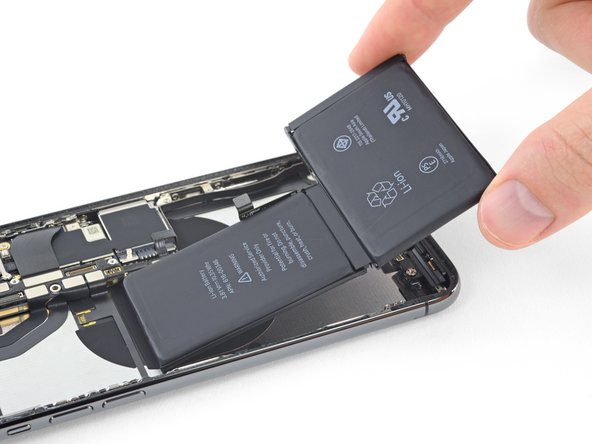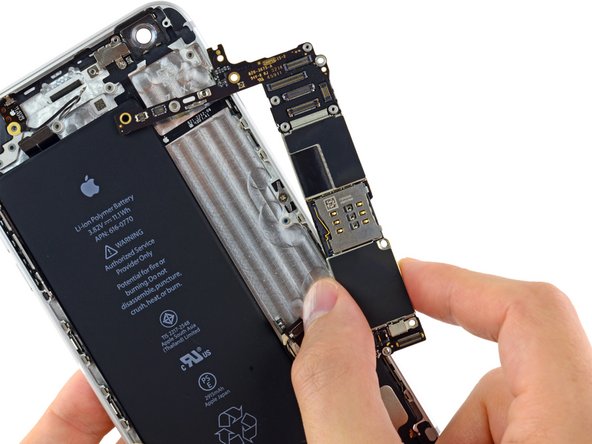Unlike the Highlander, your phone and laptop are not immortal. One day, something will break—you’ll crack the screen, or your battery will become so old it can’t hold a charge. Device manufacturers want you to buy a new device when that happens, instead of repairing the almost-perfectly-usable device you already have—and it shows in the design.
As the years have worn on, manufacturers have made more and more choices that prevent you from repairing your devices—some may be mere cost-cutting measures, while others are more egregious, locking you out for the sole purpose of preventing you from repairing your own device. Here are some of the most common examples.
Slapping “Warranty Void If Removed” Stickers on Your Gadget

When you crack open the back panel on your device—or perhaps even before—you’ll often find a sticker that claims your warranty will be void if you break the seal. But “that’s illegal under the Magnuson-Moss Warranty Act of 1975,” says Jeff Suovanen, teardown engineer at iFixit. A manufacturer can’t deny a warranty repair for, say, your screen just because you replaced your own battery. “There are a lot of things manufacturers do to sort of passive-aggressively discourage you from fixing your stuff, but the warranty-void-if-removed stickers are much more overt.” This law has gone unenforced for too long, but thankfully the FTC has begun cracking down on this misleading practice—though many manufacturers are still doing it.
Using Rare or Proprietary Screws

Everyone has a screwdriver at home, and some tech-savvy individuals may even have a set of torx bits in their toolbox. But manufacturers are increasingly using even harder-to-find screws that prevent you from getting inside the chassis.
“The easiest one to pick on is Apple, because they picked a screw design so obscure we’d never even heard of it,” says Suovanen. “And we know it wasn’t for engineering reasons, because the iPhone got along fine with ordinary Phillips screws—until all of a sudden the iPhone 4 switched to pentalobe screws. But only on the outside—none of the interior screws were changed. Since no one had a pentalobe driver, the clear intent was to tamper-proof your iPhone.”
Apple isn’t the only manufacturer to do this, of course—Nintendo was doing it all the way back in the 80s with a special security bit on NES cartridges and, later, on the Super Nintendo. These kinds of lock-out moves have only proliferated. These days, Nintendo uses rare tri-point screws on their hardware, Amazon uses tri-wing screws on the Fire TV, and Sony uses Torx security screws in the PlayStation 4.
“Torx security screws are some of the most frustrating ones, because a lot of people have torx drivers in their toolbox,” says Suovanen. “But manufacturers take that extra little step and use a torx security bit—which again, adds nothing engineering-wise to the device. It’s just an attempt to keep you out.” Some manufacturers don’t go quite this far, but will still hide screws under rubber pads or other panels.
Gluing Instead of Using Screws

In the age of sleek, curved devices with no obvious seams, many manufacturers have turned to glue instead of screws to hold things together. “There are legitimate reasons to use glue—like waterproofing,” says Suovanen. “But there is almost always a better way, like using screws and gaskets. Glue is very difficult to work with if you’re trying to repair something. It’s difficult to separate without breaking things, and it’s a pain to replace.” And when you use glue to hide those seams, it makes the device appear impossible to open, disincentivizing users to repair their device, instead of grabbing the ol’ Phillips head and taking a look inside.
Soldering Major Components Together to Make Upgrades and Repairs Impossible

Once upon a time, you could open up your laptop, pop in some new RAM or a bigger hard drive, and get an extra couple years out of your computer. But that’s often not the case anymore. “We’ve grudgingly accepted that most mobile CPUs are soldered onto the motherboard these days, and frequently that’s the only option the manufacturer has—that’s how they come from Intel,” says Suovanen. But RAM and storage are often soldered to the motherboard unnecessarily, eliminating the possibility of otherwise easy upgrades. “There’s no reason why you can’t have a very thin, very light device with modular RAM and a removable blade SSD. We know because we’ve seen it done in devices like the LG Gram and the HP EliteBook line (which is particularly repair-friendly).” When you see a label that says “no user serviceable parts inside,” you know the manufacturer has soldered everything together and you have no chance of squeezing a few extra years out of the device when it slows down.
Making It Impossible to Disassemble a Device Without Destroying It

In the most egregious cases of planned obsolescence, manufacturers will make a device difficult or impossible to open—at least, without inflicting irreparable damage. “The Surface Laptop is one of the only devices that we’ve awarded a 0 out of 10 in repairability, because it was so obvious that it was designed never to be taken apart or serviced—even by professionals,” says Suovanen. “In a nutshell, Microsoft ultrasonically welded the chassis together and then glued a fabric cover down over the top. There’s no way to take that apart without destroying it. You could put it back together with a roll of duct tape, but that’s about it.” That means if your device breaks, you’re completely out of luck—the manufacturer may give you a new device under warranty, but if your warranty has ended, you’re basically stuck buying an entirely new laptop.
Refusing to Sell Replacement Parts

Design choices aren’t the only way manufacturers prevent repair. Many companies, for example, choose not to offer official replacement parts to individuals or repair techs. “We’re used to being able to buy replacement parts for our cars and appliances, but that’s often not the case with your smartphone or laptop,” Suovanen says. And when manufacturers refuse to sell Original Equipment Manufacturer (OEM) parts, repair shops and users have to turn to third-party components instead, which can be problematic.
“It’s very hard to find good parts when the market is flooded with low-quality imitations that don’t perform well. In the case of batteries in particular, some of those third-party components can be dangerous—a cheap battery can destroy your device, or burn down your house.” Here at iFixit, we do the legwork for you, sourcing the highest quality parts we can find and testing them thoroughly before selling them in our store. But if you go searching for a replacement battery elsewhere, there’s no guarantee of what you’ll get. This whole process would be much easier and safer if people were able to buy official parts direct from the manufacturer.
Even when you can find an OEM part, some manufacturers put restrictions in place that prevent you from using it to the fullest. “If you replace the screen on your iPhone—even if it’s with a brand new OEM screen off of another identical iPhone—certain features like TrueTone won’t work correctly,” says Suovanen. This compels users to go directly to the manufacturer for repairs, no matter what they cost.
Claiming Repairs Are Impossible or Too Expensive

Finally, manufacturers will falsely tell users that certain repairs can’t be done, even when independent shops are perfectly capable of performing them. “People go to the Genius Bar with very common problems that our repair community knows how to fix, but Apple tells them it can’t be done,” says Suovanen. For example, Apple won’t help you recover data on a water-damaged iPhone, and they won’t refer you to third-party repair shops who can. In other cases, they may quote a repair price that’s high enough that most customers will just throw up their hands and buy a new device.
The ability to repair is crucial. When you repair instead of replace, your devices last longer, you prevent e-waste, and you keep a bit more money in your wallet. Manufacturers would rather you buy something new, but we can do better. Hearings on your right to repair are coming up in the next few weeks in California and Oregon, and we’re expecting a floor vote on the Minnesota bill. Call your legislator and tell them you support right to repair!




2 Comments
I hate these companies leader. All they want is make sure we are too stupid to repair it ourself. In fact, they want us to become so stupid that we will all depends on them. Well, NO. I will not. I will not obey and i will repair it myself. Yeah, sure, you will damage it by opening it but, it will give it a 5-6 more years of use. Oh and, you all wonder why we have so much trashes around the world? Well, the answer is…. Companies Leaders who want you to be a stupid human beign.
Period
M The B - Reply
Brilliant work, well done!!
Ella - Reply